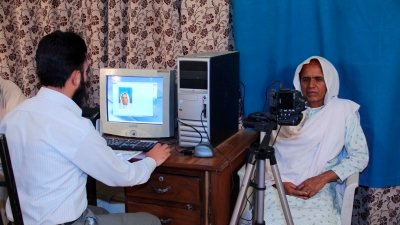Challenge
In August 2010, Pakistan experienced terrible floods affecting:
- 78 districts and nearly 10% of Pakistan’s population covering one-third of the country
- More than a million houses in all regions of the country and over 20 million people
- Over 100,000 square km of land
- 2.4 million hectares of crops and a large number of livestock.
The flooding had a catastrophic effect on evaluated households (HHs): 52% suffered total collapse of all housing structures, 72% were displaced from their homes (average of 40 days). Coping strategies included: borrowing money (37%), spending savings, selling assets, and reducing food consumption.
Solution
The government of Pakistan set-up a unique post-disaster cash transfer program, Citizens’ Damage Compensation Program (CDCP), to support the flood-affected population in restoring their lives and livelihood. The World Bank, DFID, USAID and the government of Italy joined the Phase-II collectively through the Flood Emergency Cash Transfer Project (FECT) Project reaching at least 1 million households (7.5 million people), including the vulnerable (widows and disabled-headed households) and providing $404 to each beneficiary household in two equal tranches of $202. The beneficiaries were enrolled in the program through biometric verification with a national ID database and cash grants were disbursed through debit cards by engaging the private banking sector.
Phase-II also provided technical assistance for enhanced governance, improved transparency, establishing effective mechanisms to resolve grievances, and rigorous monitoring and evaluations. In addition, Phase-II incorporated measures needed to address certain gaps such as capacity building of implementation agencies at the federal, provincial, and local level, and strengthening of communications and the public information campaign. The program has offered a model framework for preparing a National Disaster Response Action Plan for early recovery phase that has been approved by the Cabinet Division, Government of Pakistan.
Results
Since the project was approved in spring 2011:
- The program reached out to an estimated 1 million households (7.5 million people) identified through provincial housing damage data verified through third party validation.
- Beneficiary households received two payments of PKR 20,000 (approx. $202 through a unique debit card issued when they register for the program after their identity is biometrically verified.
- Cash transfers made from November 2011 to January 2013 to 1,005,754 households (7.5 million people).
- 17% of ultra-poor (which are the country’s largest social safety net program’s beneficiaries) are benefitting from the program.
- 18% (181,000) of 1,005,754 beneficiary HHs are female-headed households/families.
- More than 172,480 flood-affected households have been brought into the fold of the program through the grievance-redress system, 10% of them are female-headed households.
- The baseline report notes that 17% of CDCP beneficiary households exist below the poverty line.


